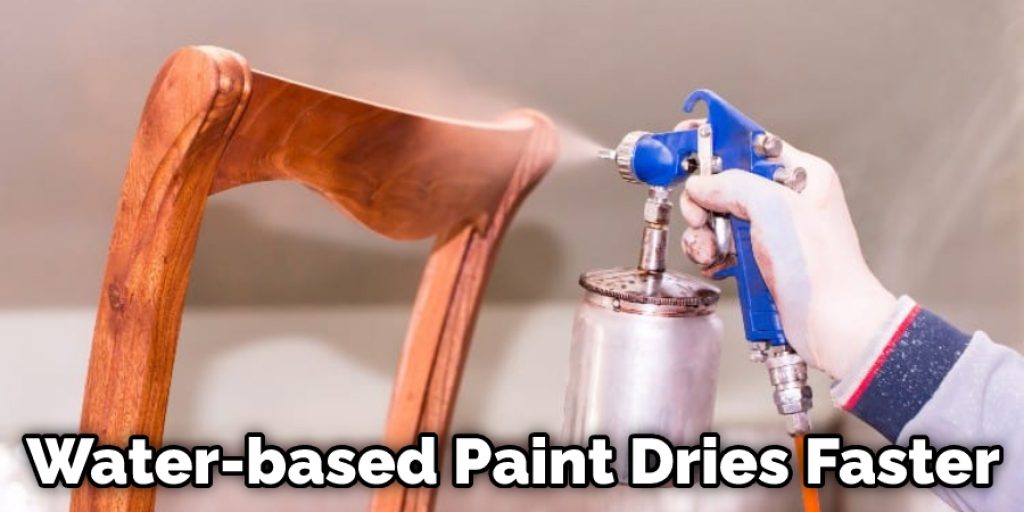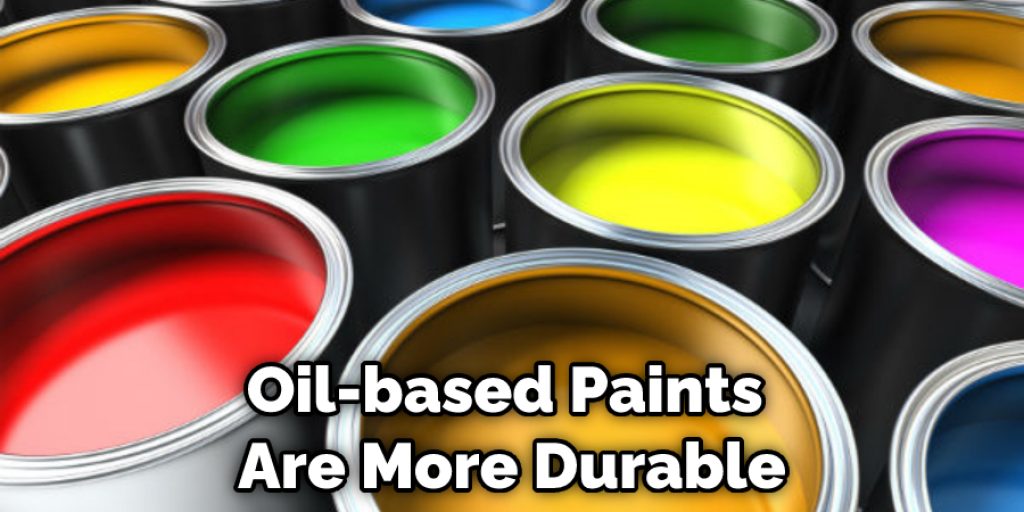How to Tell if Spray Paint Is Oil Based
Spray paint can be a great way to quickly and easily cover large areas with color, but not all spray paints are created equal. To get the best results, it’s important to know which type of spray paint you’re using.

Oil-based paint is more durable and longer-lasting, but it can also be more susceptible to fading in sunlight. Water-based paint is less durable but easier to clean up. Here’s a guide on how to tell if spray paint is oil based. Read on to know more information!
Oil-Based vs Water-Based: What’s the Difference
If you’re like most people, you’ve used aerosol spray paint before. Maybe you’re working on a home improvement project; maybe your kids want to get in on the action, or maybe you want to avoid making an expensive trip to the hardware store every time you run out of paint.
Either way, it’s important to know what type of paint you’re buying before you pick it up; not all cans contain the same kind of material, and what’s inside the can is just as important as what color it is.
Oil-based and water-based paints look almost exactly alike; in fact, you might be hard-pressed to know the difference even if you’re holding them side by side. The truth is that it’s hard to tell the difference just from looking at the can, but there are a few key differences between oil-based and water-based paints that you should know before making your purchase:
1. Toxicity:
Water-based paint is much less toxic than oil-based paint, making it safer for everyone, especially kids. If you’ve ever had to empty an entire room before painting because your toddler was fascinated with the paint tray, you might want to stick to water-based paints (or switch entirely).
2. Cleanup:
Water-based paints require soap and water for cleanup; oil-based paints require mineral spirits. While this might not seem like a big deal, it could be an issue if your kids are using the paint or you’re working outside without running water nearby.
3. Storage:
Oil-based paint must be stored in airtight containers because it becomes thicker. Water-based paint can be stored in any container because it will maintain its liquid consistency.
4. Drying Time:
Water-based paint dries faster than oil-based paint, so you’ll notice it says so on the back of the can. Some paint manufacturers have created an oil-based paint that dries quickly, but it can be more expensive.

5. Ability to Spread:
Water-based paints are called “paint and primer” or “all-in-one paint” because they contain latex and cover easily. Oil-based paints will go on more smoothly if you’re using them on a vertical surface.
6. Price:
Oil-based paints are more expensive than water-based paints, plus they’re more difficult to remove if you make a mistake.
How to Tell if Spray Paint Is Oil Based: 10 Factors to Know
1. Sheen Levels:
A higher sheen level shows that the paint is oil-based, whereas a lower one shows that it might be water-based.
2. Smell:
Oil-based paint has a strong solvent/paint smell, while water-based paints have a more chemical/paint smell.
3. Drying Time:
Oil-based paint dries slower than latex-based paint, so it may take longer to get the desired finish. It is typically recommended that you use oil-based paints during cold weather months because they dry very slowly in colder temperatures.
4. Wrinkle Level:
After the paint dries, it will begin to wrinkle. If there are fewer wrinkles, it is more likely water-based; if there are more wrinkles (also known as orange peel), then it’s oil-based.
5. Durability:
Oil-based paints are more durable, especially when it comes to preventing chipping and peeling.

6. Toxicity:
Water-based paint is considered safer because it emits fewer VOCs (volatile organic compounds). However, oil-based paints still meet all safety standards set by the EPA, so they are safe to use.
7. Drop and Float Test:
Drop a small amount of paint onto the water; if it floats, it’s latex-based; if not, it’s oil-based. This test is usually only effective for very thin layers of paint (think one or two coats).
8. Exterior Use:
These paints are not meant for outdoor use, so if the label says it’s weatherproof or water-resistant, you can be sure that it is latex-based.
9. Varnish:
These paints contain a varnish, so if the label says it’s glossy, you can be sure that it is oil-based.
10. Availability:
Oil-based paints are typically unavailable at your local hardware store but only at distributors or specialty paint stores. Similarly, latex-based paints are easier to find in most hardware stores, but you can order oil-based paints from a distributor or specialty store.
You Can Check It Out to the Gas Propellant Move When an Aerosol Can Is Used
What Is The Ideal Temperature for Your Spray Paint
To find out the best temperature for your spray paint is to keep it between 55 and 75 degrees Fahrenheit. If the temperature is too high, the paint will dry before reaching the surface of your project and gather in clumps. It can also cause skin irritation, like hives. In addition, the spray paint may come out unevenly or only strip parts of color on top of the surface.
If you are working with your spray paint outdoors, it is best to be at least 10 feet away from your project area. You can also be inside, next to an open window for ventilation. To extend your paint’s life, avoid extreme weather conditions and always shake the can before use.
Should You Invest in Spray Paint Accessories
According to our research, there is no need to buy accessories for your spray paint. There are no special tools required. We did some more digging and found that many professional artists recommend cleaning any surface with a dry cloth before starting to paint. They also recommend that you clean your equipment with warm water filled with dish soap.

These are tricks that professionals know about, but no tools are required. If you want to be sure what kind of paint you have, check the label on the can, or visit your local hardware store for help. Unfortunately, the labeling has changed over the years, and we can’t be certain how it applies to every single brand of spray paint.
Therefore, we advise you to check the label yourself, but there is no need to buy accessories specifically made for your paint in most cases.
Conclusion
Now that you know how to tell if spray paint is oil based, it’s time to get out there and start painting. Keep in mind the different effects of using an oil base versus a water base when choosing which type of paints are best for your project.
If you need help determining what kind of paint is best for your needs or have any other questions about this blog post, let us know! We’re happy to answer any additional questions you may have. Happy crafting!




